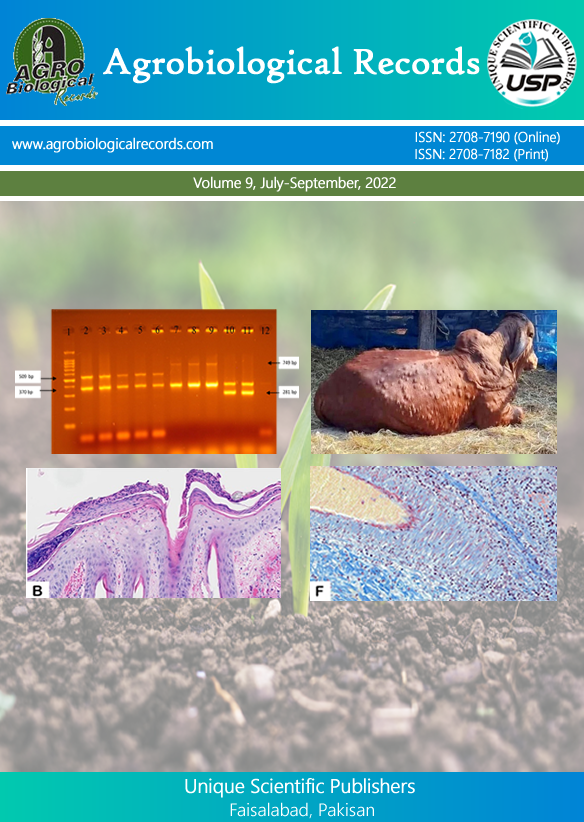
Zeeshan Afzal1, M Tariq Javed1, Muhammad Mohsin2*, Hafiz Muhammad Waqar Ahmad3, Zohaib Saeed4*, Muhammad Taimoor3, Rizwan Abdul Aleem5, Ali Raza1, Ameema Ayub1, Faryal Israr1, Zain Ul Abdeen1, Tahir Sarfaraz1, Shaza Zarnab1, Sami Ullah Khan Bahadur1 and Atta Ullah3
1Department of Pathology, Faculty of Veterinary Science, University of Agriculture, Faisalabad, Pakistan 2Shantou University Medical College, Shantou, China 3Veterinary Research Institute, Lahore, Pakistan 4Department of Parasitology, Faculty of Veterinary Science, University of Agriculture Faisalabad Pakistan. 5Department of Clinical Medicine and Surgery, Faculty of Veterinary Science, University of Agriculture, Faisalabad, Pakistan
*Corresponding author: onlymohsindvm@gmail.com (MM); zohaibsaeedahmad@gmail.com (ZS)
A comprehensive study was conducted to investigate the effect of temperature variations of water bath along with the sample’s storage duration on the results of the glutaraldehyde coagulation test (GCT), being developed for the diagnosis of tuberculosis. Furthermore, association of GCT results and duration of tuberculosis, tuberculosis + Hepatitis C virus positive, hepatitis C virus infected and control negative humans was also assessed. The blood samples from tuberculosis positive as well as negative humans and animals were collected and carried GCT with the variation of storage duration and temperature at which test performed (V1-V6). The demographic data of all individuals along with blood samples was also collected. Hematological and serum biochemical analysis was also performed. The results showed the significantly (P<0.05) lower time for coagulation of blood samples by the glutaraldehyde in TB positive than negative cases in all variations of temperature and samples storage time, with the remarkable difference in humans than animals. Time taken for coagulation was less than 10min when tuberculosis disease was of less than six months’ duration and was around 10min when the disease was of more than six months. The coagulation time for tuberculosis + HCV and HCV alone were non-significantly (P>0.05) different from the control group. Increased fibrinogen level in tuberculosis positive humans and animals and decrease in hepatitis patients confirmed the relationship of fibrinogen level with coagulation time of the glutaraldehyde test. The diagnostic value of the glutaraldehyde test for human and animal tuberculosis has been highly speculated.